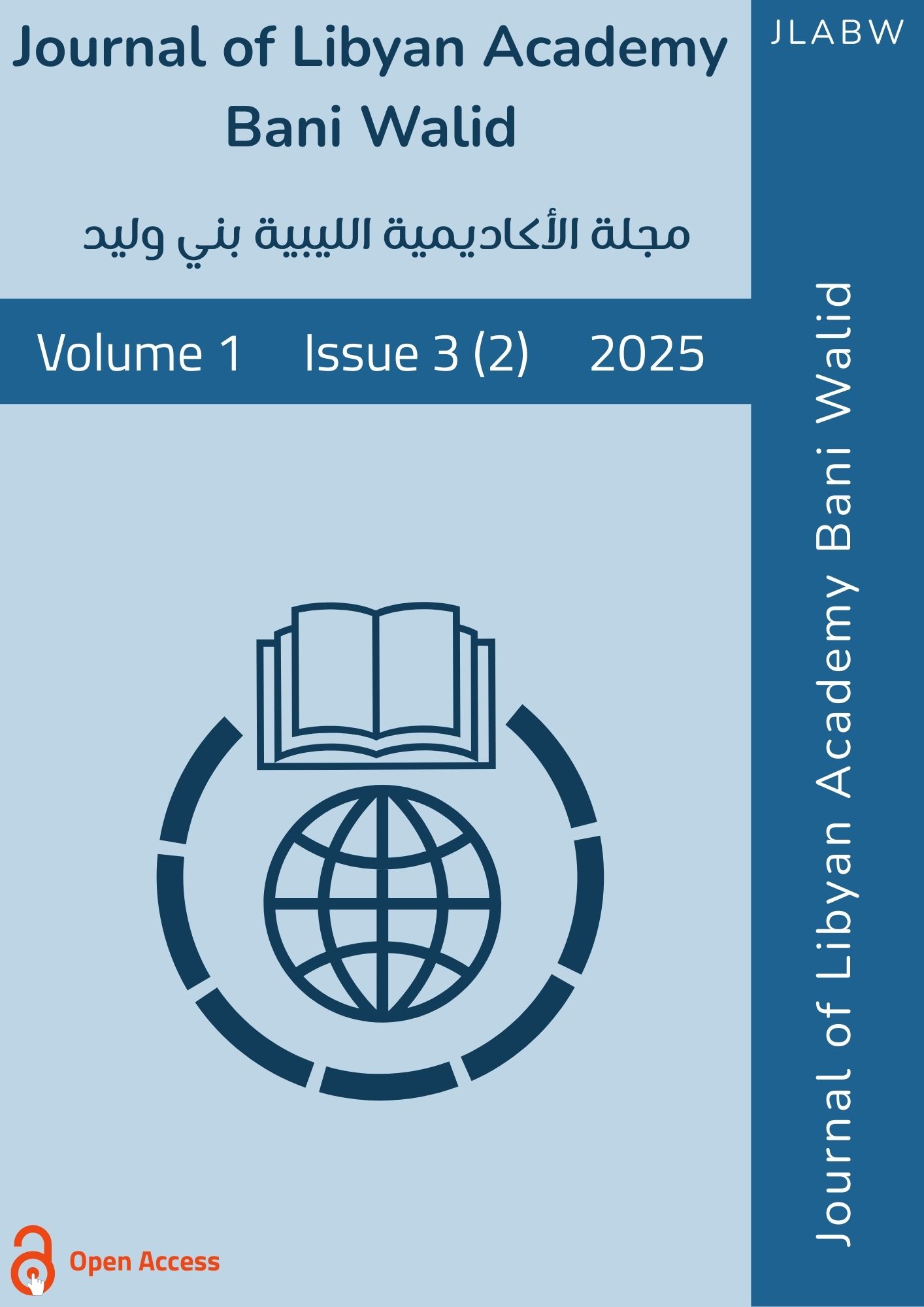تحليل الخصائص الهيدروغرافية والبيوجيوكيميائية بجنوب المتوسط باستخدام التعلم غير المُراقب وأثرها على البيئة البحرية
DOI:
https://doi.org/10.61952/jlabw.v1i3.221الكلمات المفتاحية:
: التعلم غير المراقب، الخصائص الهيدروغرافية، الخصائص البيوجيوكيميائية، البحر الأبيضالملخص
يهدف هذا البحث إلى تحليل وتوصيف الخصائص الهيدروغرافية والبيوجيوكيميائية في جنوب البحر الأبيض المتوسط، لفهم أنماط الطبقية العمودية وتأثيرها على البيئة البحرية.
حيث تم تطبيق تقنيات التعلم غير المُراقب (Unsupervised Learning)، تحديداً خوارزميتي K-Means وخرائط التنظيم الذاتي (SOM)، لتحليل البيانات متعددة الأبعاد ودُعم هذا التحليل بأدوات إحصائية متقدمة مثل تحليل المكونات الرئيسية (PCA) وتحليل التباين (ANOVA) لضمان موثوقية النتائج.
نجح التحليل في تحديد ثلاثة تجمعات مائية رئيسية متميزة عموديًا (سطحية، متوسطة، وعميقة) أكد تحليل PCA أن الطبقية العمودية (المتمثلة في الكثافة، الحرارة، والأكسجين الذائب) هي المحرك الأساسي للتباين في المنطقة, كما أظهرت النتائج وجود فروق إحصائية ذات دلالة عالية في المتغيرات الفيزيائية والأكسجين الذائب بين التجمعات.
أثبت البحث أن دمج التعلم الآلي مع التحليل الإحصائي يوفر إطاراً قوياً لاستكشاف الأنماط المعقدة في النظم البحرية، مما يدعم جهود الإدارة البيئية والحفاظ على الموارد البحرية في جنوب المتوسط.
المراجع
Belgacem, M., Sghaier, Y. R., Zouch, M., & Ayadi, H. (2020). On the peculiar nutrient ratios in the Mediterranean Sea: A basin-wide study. Progress in Oceanography, 188, 102424
Civitarese, G., Fajar, N. M., Fripiat, F., Gerke, L., Gogou, A., Guallart, E. F., ... & Tanhua, T. (2020). Physical and biogeochemical parameters of the Mediterranean Sea during the last few decades. Earth System Science Data, 12(4), 2747–2771. https://doi.org/10.5194/essd-12-2747-2020
Cremonini, R., Cappelletto, A., & Pavanati, M. (2021). K-means clustering for meteo-oceanographic data analysis: A case study. Journal of Marine Science and Engineering, 9(5), 521.
Esri, National Oceanic and Atmospheric Administration (NOAA), & U.S. Geological Survey (USGS). (2017). A Three-Dimensional Mapping of the Ocean Based on Environmental Data. Oceanography, 30(2), 100-109.
Grover, A., Benson, A. R., & Guttag, J. V. (2024). The Promise and Pitfalls of Machine Learning in Ocean Remote Sensing. Oceanography, 37(3). https://tos.org/oceanography/article/the-promise-and-pitfalls-of-machine-learning-in-ocean-remote-sensing
Hassoun, A. E. R., & Mojtahid, M. (2025, September 5). What climate change means for the Mediterranean Sea. Phys.org. Retrieved from https://phys.org/news/2025-09-climate-mediterranean-sea.html
Hassoun, A. E. R., et al. (2025). Climate change risks on key open marine and coastal Mediterranean ecosystems. Scientific Reports, 15, Article 07858. https://www.nature.com/articles/s41598-025-07858-x
Monir, M. U., et al. (2023). Machine learning in marine ecology: an overview of techniques and applications. ICES Journal of Marine Science, 80(7), 1829–1847. https://doi.org/10.1093/icesjms/fsad118
Placenti, F., Schroeder, K., Borghini, M., Cerrati, G., Cuttitta, A., Tancredi, V., ... & Patti, B. (2024). A 12-year-long (2010–2021) hydrological and biogeochemical dataset in the Sicily Channel (Mediterranean Sea). Earth System Science Data, 16(2), 743–757.






